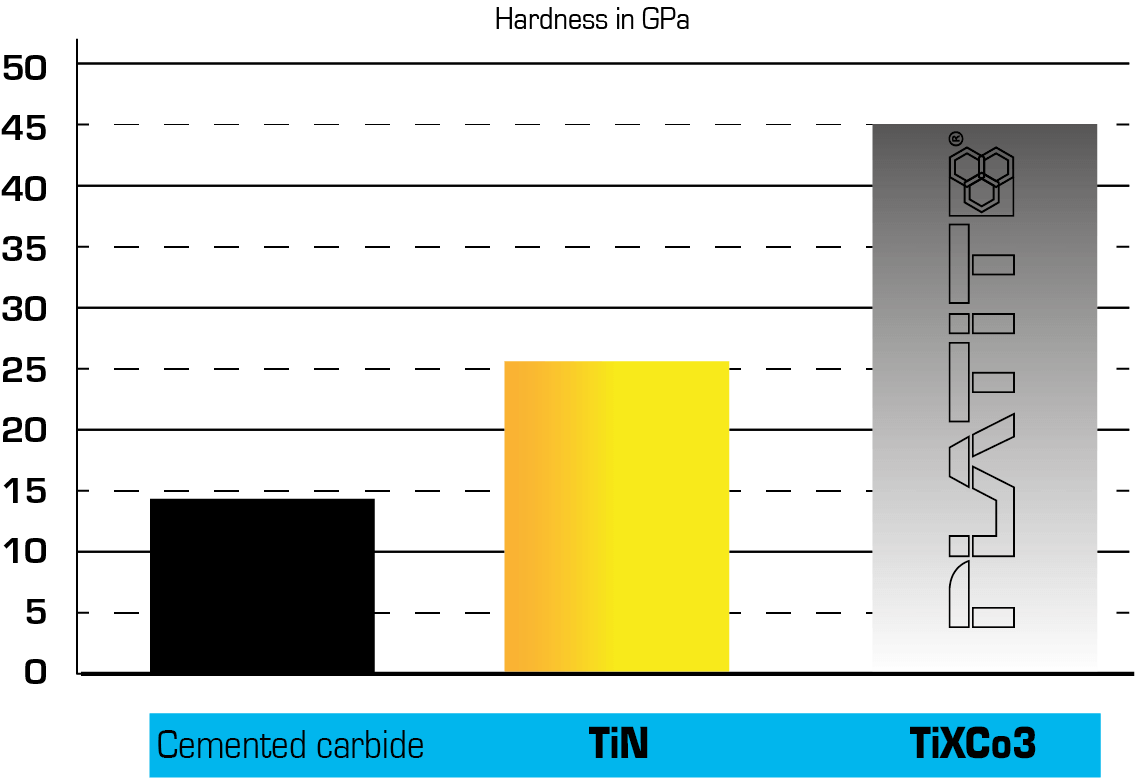The PVD coating process
A hard coating is an extremely thin protective film that improves the surface properties of a material. These improvements can take place in multiple dimensions and positively impact your tools and components in terms of:
- Plastic hardness
- Oxidation resistance
- Friction
- Breaking strength
- Chemical stability
- and many other properties depending on the application

Although the PVD coating is only a few micrometers thick, it enables a marked increase in cutting speeds on a cutting tool, for example. This contributes to an increase in productivity and a longer service life (tool life).

This is how a typical PVD coating process works
Loading
In this process step, the PVD coating chamber is loaded with the substrates. Care is taken to ensure that all elements are optimally positioned for uniform coating thickness.
Evacuating
A high vacuum is required for the deposition of PVD coatings. The creation of the vacuum is called evacuation. Evacuation takes place in PLATIT units in two steps:
- First, a rotary vane pump generates an inlet pressure of 100 to 10 -2 mbar in the chamber.
- Then, the turbomolecular pump generates a high vacuum of about 1 x 10 -5 mbar.
Heating
Now the chamber is heated up.
The usual process temperatures are around 150 - 500°C.
Plasma etching
PLATIT units work with three different etching processes:
- LGD® (Lateral Glow Discharge)
- Plasma etching with argon, glow discharge
- Metal ion etching (Ti, Cr)
Coating deposition
Only now does the actual coating deposition take place. For this purpose, PVD coating processes (arc, sputter or hybrid LACS® technology) or PECVD coating processes are used.
Cooling
After the coatings have been successfully deposited, the chamber must be cooled down in a controlled manner. Too rapid cooling must be prevented as it could lead to stress or defects in the coated substrates.
Unloading
Once the cooling process is complete, the coating chamber can be unloaded. The tools or components are now coated with a hard material coating that gives them the desired positive properties (hard, low friction, etc.).